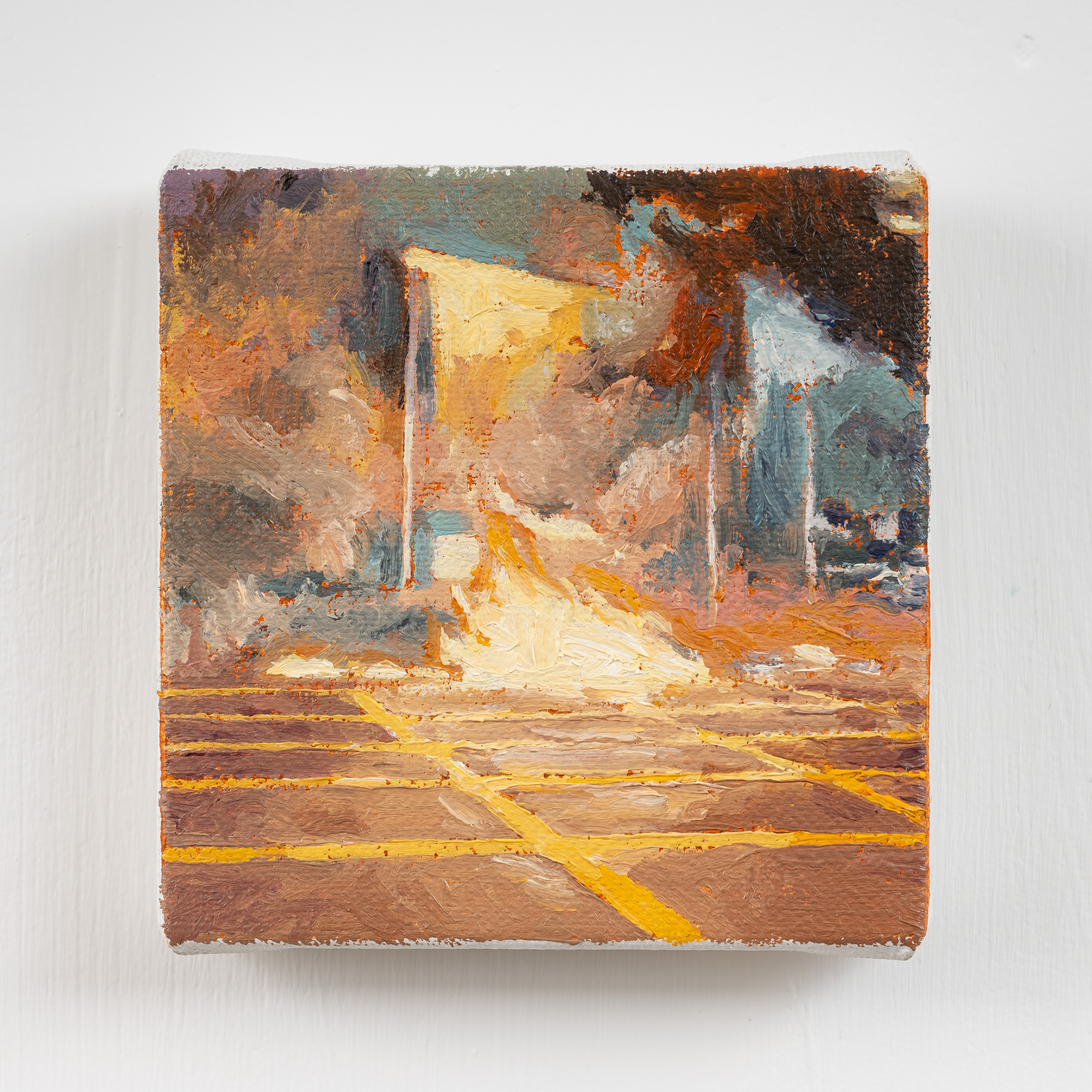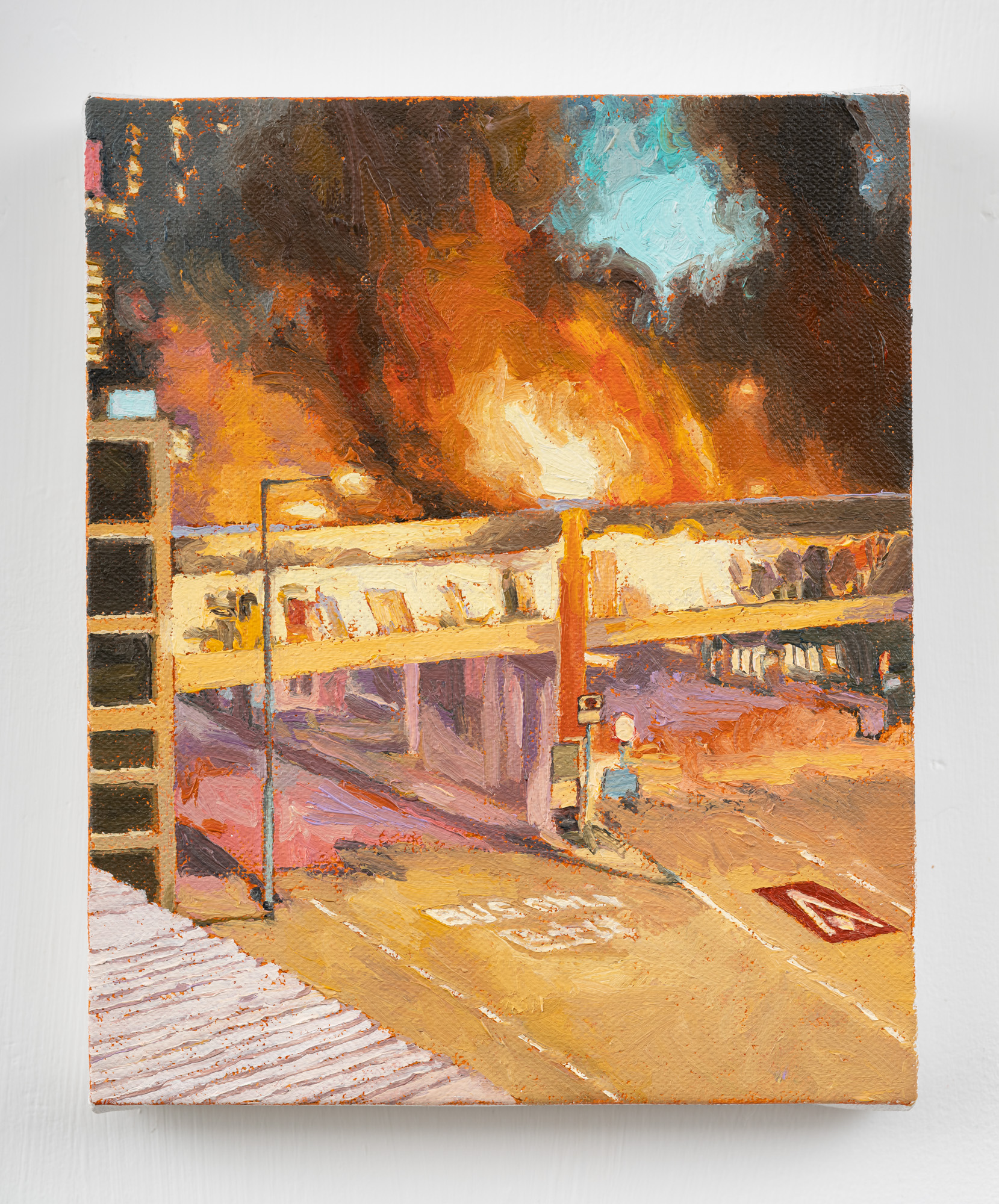Shows
A City’s Surreal Reality in Chow Chun Fai’s “Portraits from Behind”


Protestors, police, journalists, medics. These are the subjects of Chow Chun Fai’s “Portraits from Behind” at Hong Kong’s Gallery Exit. The mostly ten-by-ten-centimeter paintings are based on internet photographs and livestreams of the city’s ongoing pro-democracy movement. The subtle gestures that Chow embedded in his interpretations of these images intertwine the real and surreal, reflecting the disbelief that Chow felt and the difficulty that he had with processing the turmoil that has tore through his hometown.

The exhibition began with three self-portraits. June 12 2019 City Hall (2019), showing a teary-eyed Chow donning an N95 mask in front of a similarly masked crowd, marks the beginning of the protests and this body of work. Thousands gathered on June 12 to oppose a new bill allowing the transfer of alleged criminals to mainland China from Hong Kong, which has a semi-autonomous status following its retrocession from the United Kingdom. The event ended in intense confrontation between demonstrators and the police when tear gas was dispersed for crowd control, a precursor to the turbulence of the next months as the movement evolved into cries for universal suffrage following the withdrawal of the extradition bill.
The rest of the series, scattered around the spacious gallery, was like a scrambled puzzle that viewers had to assemble themselves. Renderings of anonymous protestors, police, and civilians, often with their backs shown, reflect the exhibition title, which suggests that the pro-democracy movement doesn’t have a single hero but numerous faceless proponents.

The violence that unfolded on the protests’ front lines pervades the paintings. The Chinese University of Hong Kong II (2020) records the on-campus conflict during mid-November, 2019, between protestors and police who respectively launched petrol bombs and tear gas at each other. The impressionistic piece details only the silhouettes of a group holding umbrellas—a symbol of the movement—against the splashes of chemicals hurled at them as they face soaring fires. The contrasting red and blue hues in the background amplifies the tension. This contrastive palette is similarly found in Chatham Road (2020), in which a section of the major road, absent of people, is engulfed in flames—offering a glimpse of a city on the verge of collapse.
Other more detailed compositions appear to depict ordinary scenes, but upon closer inspection unveil the same theme of restlessness. For example, New Town Plaza (2019) shows people reading a wall of post-it notes, their full figures reflected on the shiny tiled floor of the shopping center. These colorful installations with messages of encouragement from citizens, named Lennon Wall after the original in Prague, have surfaced throughout the city. Guard Fence (2019), a close-up of the iconic red taxis recalling Chow’s earlier figurative paintings in Hong Kong Taxi (2003–05), also contains an inconspicuous clue. The vehicle’s side mirror reveals that nearby metal pedestrian fencings are replaced by orange barricade tape, a common sight following the removal of the railings by protestors. Through these seemingly everyday scenes, Chow paints an image of a changing Hong Kong.
Chow’s choice of pastel colors, conventionally employed for dreamy atmospheres, creates an ironic discrepancy with the works’ content while accentuating the surrealness of the destructive acts played out on the streets of Hong Kong. Images such as the entryway of the vehicular harbor crossing, a vital part of the city’s transportation system, on fire, in Cross Harbour Tunnel II (2019), and riot police in full gear standing by a crowded MTR station in Wan Chai Metro Station (2019), represents the core of this series: what was once unimaginable has become routine. Meanwhile, in the midst of the Covid-19 pandemic, we are all facing a reality repeated tirelessly in disaster movies. One cannot help but question: how should we live normally in this abnormal era?


Chow Chun Fai’s “Portraits from Behind” is on view at Gallery Exit, Hong Kong, until May 16, 2020.







